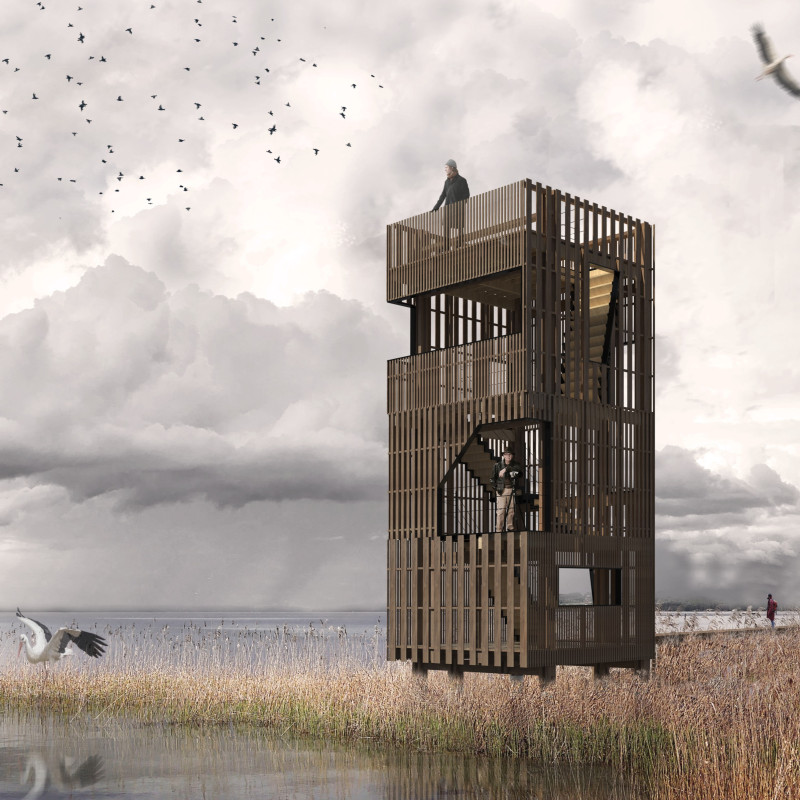5 key facts about this project
The primary function of the Pape Bird Observation Tower is to provide an elevated vantage point for bird watching and nature observation. The structure rises vertically, enabling visitors to view the flora and fauna from various heights and perspectives. This vertical orientation not only allows for unobstructed views of the landscape but also emphasizes the connection between the architecture and its environment.
The design of the observation tower incorporates several key architectural elements. The structure consists of multiple levels, connected by a well-integrated staircase. The use of wood is predominant, which aligns with sustainable building practices while creating a visually appealing aspect to the architecture. Metal components are used to ensure structural integrity, while concrete provides a reliable foundation for the tower.
A significant aspect of the design is the strategic arrangement of slatted wooden cladding, which offers transparency and light penetration within the space. This feature allows visitors to engage with nature directly while providing framed views of the landscape, enhancing the overall experience. The design also dedicates specific platforms for bird watching, which encourages visitors to immerse themselves in the activity.
The tower's accessibility is considered through its design, with wide staircases and open viewing platforms, ensuring that a wide audience can enjoy the facility. Each level of the tower is specifically designed to accommodate viewers of different heights and preferences, further enhancing user experience.
The Pape Bird Observation Tower distinguishes itself from typical observation structures by incorporating unique design features. The thoughtful consideration of its ecological context informs its placement and visibility, allowing the tower to blend into the surroundings rather than dominate it. The use of local materials ensures that the construction resonates with the regional character, presenting an architectural identity that complements the natural landscape.
Moreover, the structure effectively promotes sustainability through its material choices and design principles, which prioritize minimal environmental impact. By focusing on renewable resources and energy-efficient use, the tower reflects modern architectural standards that respond to ecological challenges.
For a comprehensive understanding of the architectural intent and details, readers are encouraged to explore the project presentation further. By reviewing the architectural plans, sections, and designs, one can gain deeper insights into the thoughtful ideas underpinning this observation tower, as well as its functionality and unique features. Through the exploration of this project, a clearer picture of the relationship between architecture and nature will unfold, revealing the significance of the Pape Bird Observation Tower within its environment.


























